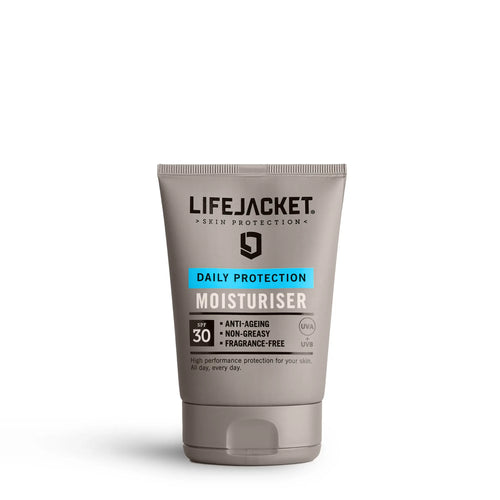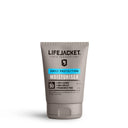Have you noticed your skin change over the past few weeks?
Even though we’ve had a mild autumn so far, the temperature has plunged in recent weeks and we're getting a lot of questions about redness, itchiness and dry skin. As the seasons change, this is something a lot of us get every year.
While the priorities in winter are more about hunkering down, keeping warm and eating hearty meals, you won’t be surprised to hear me say that your skin - and skin protection, above all - shouldn’t be neglected.
Everyday's a skin protection day
This is something we truly believe.
The skin is your body’s largest organ and comes under attack every day. The damage from this can have cosmetic, physical and long-term health consequences. In plain English, it can make your skin look bad, cause you discomfort and, worst case, give you a skin disease you really don’t want.
In winter, the things ‘attacking’ your skin can be combated. A little known fact is that winter is the worst time of year for people who suffer from outbreaks but there’s no reason you can’t get that summer-skin-feel all year round, with some basic management.
First of all, let’s understand what’s happening to your skin in winter.
Basic skin anatomy
The skin’s top layer is called the epidermis. It’s a waterproof barrier between your body and the big wide world. The epidermis keeps things out like bacteria, viruses and infections. It’s also the skin layer where drying takes place. And this is key.
Healthy skin contains c.30% water. Each day, it loses about one pint. Winter presents a problem because humidity is low both inside and out, and the water content of the epidermis tends to mirror atmospheric humidity. So, as humidity drops, water loss increases because dry air pulls moisture from the skin.
When the skin’s water content drops below 10%, dryness, flaking and itching begins. This leads to redness, cracking and inflammation: all signs you might personally recognise of weathered, winter skin.
Why does this happen?
Cells in the epidermis are held together by a lipid-rich glue made up of natural oils. When the glue is weakened, water loss (and its consequences) accelerate. Things that cause the glue to lose its grip include: sun damage, over-cleansing, scrubbing, underlying medical conditions and, of course, winter conditions.
It’s also worth mentioning that the epidermis gets thinner with age often due to the cumulative effect of sun damage. Thinner skin doesn’t retain moisture as well. On top of this, natural oil production slows with age.
While dry skin is clearly not life-threatening, it’s a nuisance, doesn’t look great and can give rise to complications like eczema or infections (don’t forget the main role of the epidermis!).
How should I adjust my skincare during winter?
If you haven't worked it out, the goal is to avoid getting dry skin.
We’ve put together a list of the five things we think will work the hardest for your skin and which can be managed relatively easily
There are a few bonus steps on top for those (like me) who suffer more than the average person.
1. MOISTURISE AT LEAST ONCE A DAY
Moisturisers can do two things depending on their ingredients: form a layer to block water leaving or try and add water to the epidermis. Use what you like and apply at least twice a day for dry skin and especially if your skin is going to take a bashing outside in harsh weather. Apply straight after a bath or shower to seal in moisture while your skin is damp. Don’t forget about your hands and body - they definitely won’t say no to a daily layer of added moisture. During the day, your moisturiser needs to contain SPF. If you're shaving, leave cream or gel on your face for a few minutes before starting. Bonus points for using an evening balm/oil/moisturiser. Obviously, LifeJacket has you covered for day and evening moisturisers.
2. AVOID SOAP
Avoid soap-based products when cleaning as they are drying and strip natural oils from the skin. Our Face Cleansing Bar and Body Wash Bar are not soaps! They're super-fatted and pH-balanced to protect, hydrate and clean your skin.
3. SHOWER
This is where I go wrong. Long, hot showers also strip away the body's natural oils. Keep your bath or shower to 10 minutes maximum and try to set the temperature to lukewarm.
4. DRINK
It’s common to drink less water in the winter because you’re likely to be less thirsty/sweat less. But maintain cellular moisture from the inside out and drink up.
5. HUMIDIFY
This is slightly left field but buy a portable humidifier for the home and put it by your bed or desk. It doesn’t have to be a monstrosity and even a small USB-powered one can do a good job. Adding moisture to your environment will combat the drying effect of central heating and stop your environment stealing water from your skin.
Encouraging you to take better care of your skin every single day, no matter what the motivation, is our goal. We hope these simple steps get you through the very specific skin stresses that winter presents.
Enjoy the winter and see you (fresh-faced) on the other side!






